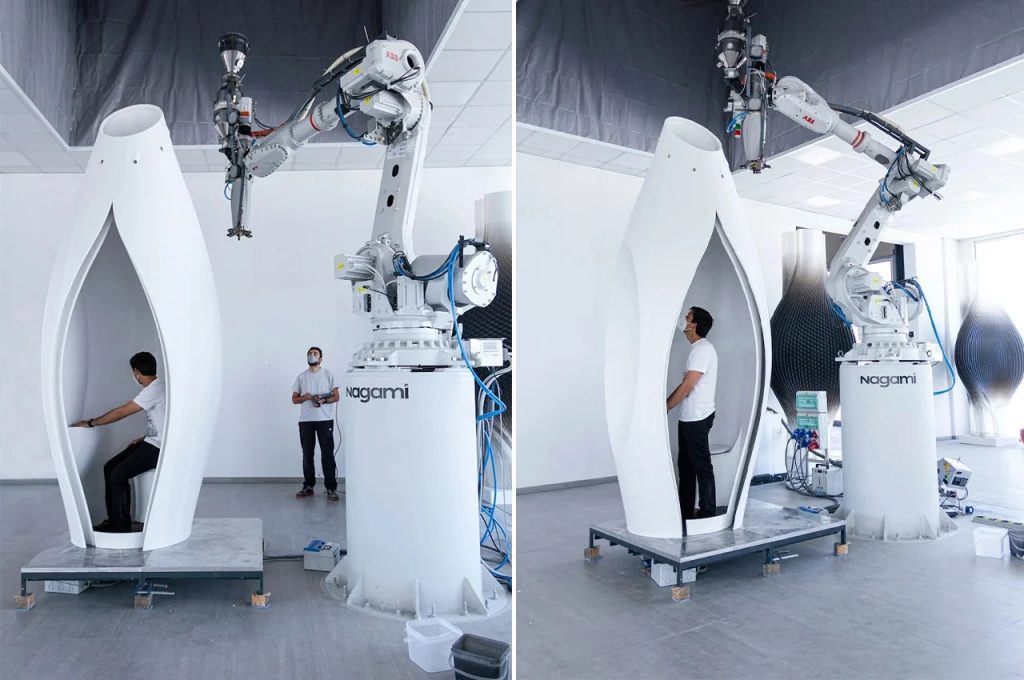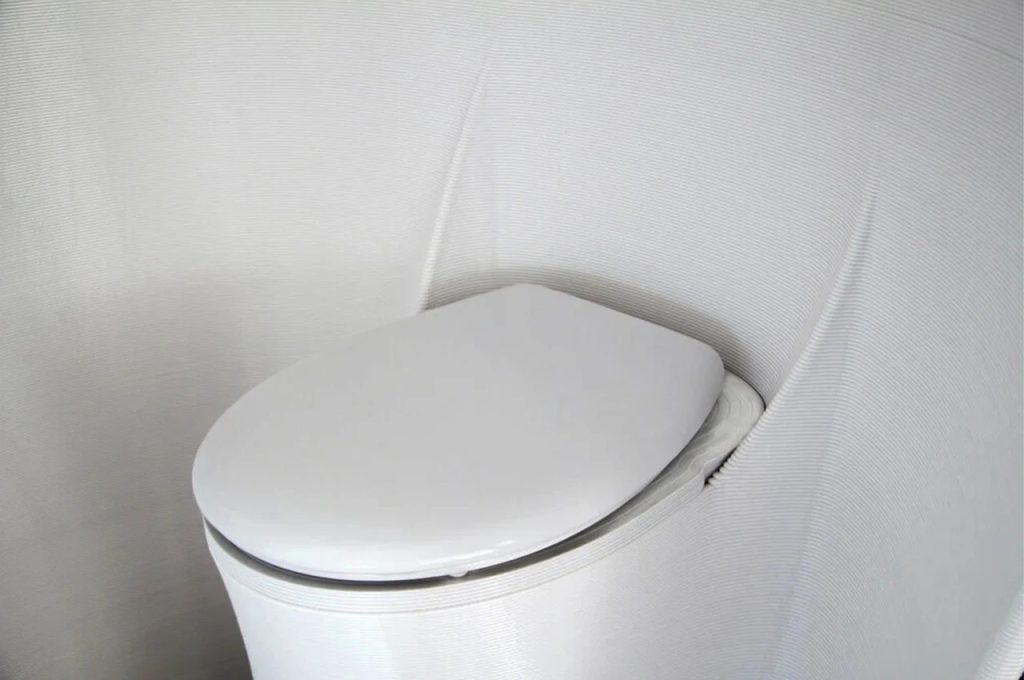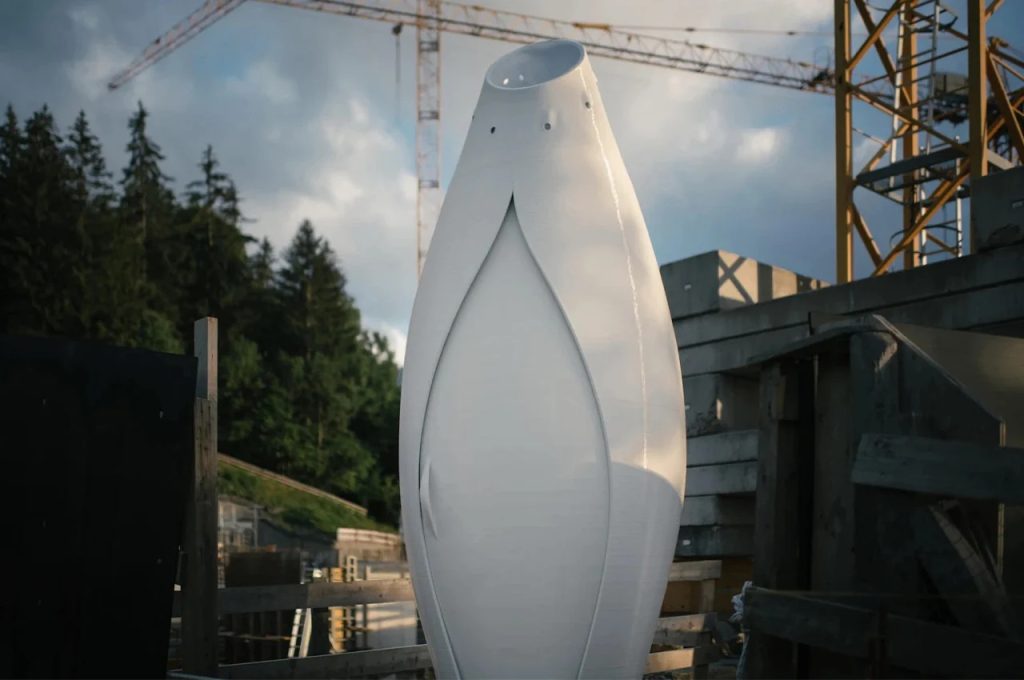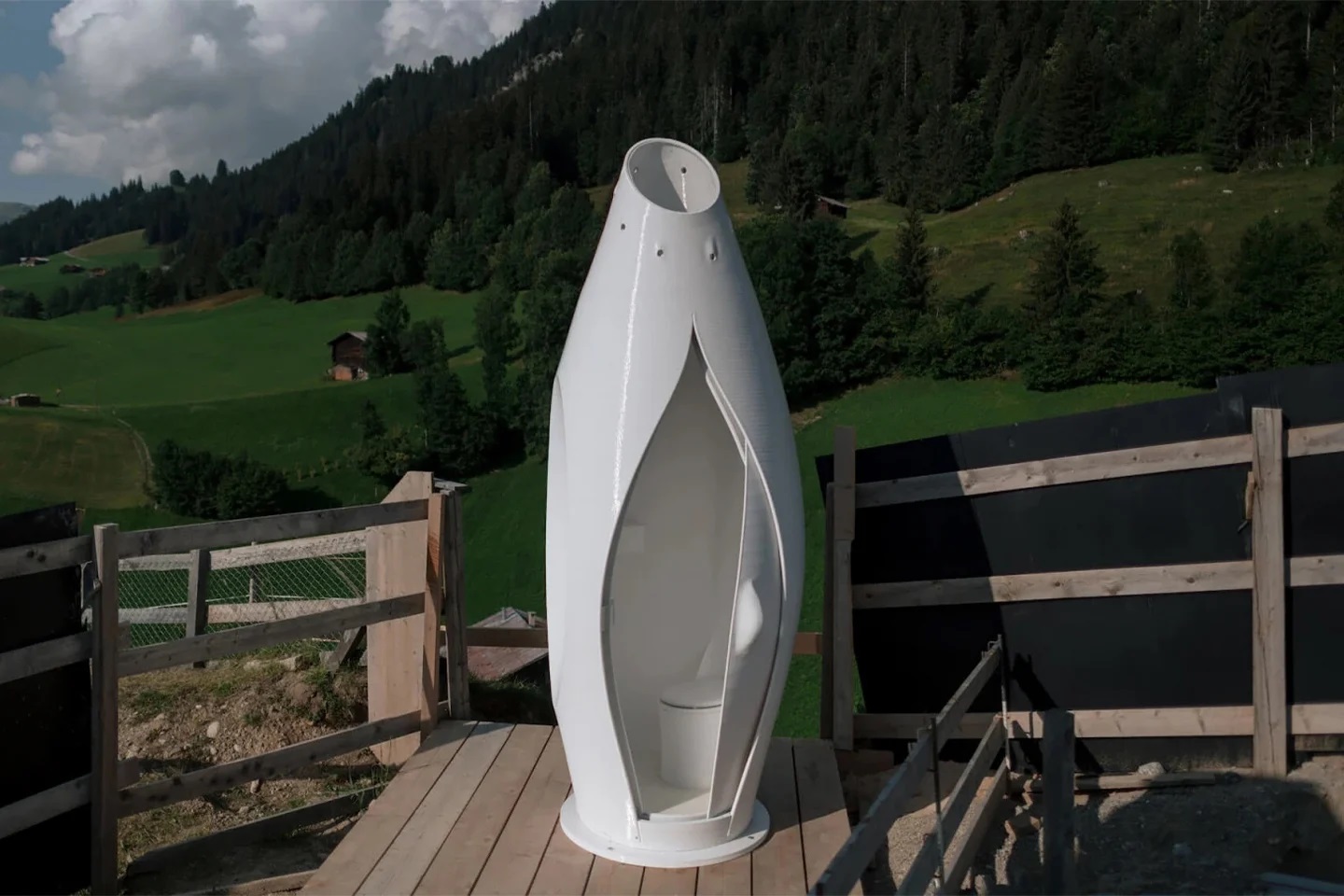Another approach to saving the environment
3D printing has revolutionized the world of design, allowing people to create customized objects on their own. But 3D printers didn’t stop there; they have started to be used in large-scale projects such as buildings or for smaller constructions, for example, toilets.
This environmentally friendly toilet is designed to decompose solid waste and face the problem of sanitation crisis, combining design and technology. Thanks to a system that eliminates plastic trash and converts it into construction material, it’s also reduced the amount of waste that ends up in landfills. With its white aesthetic and cocoon shape, the portable toilet is also incredibly stunning. An innovative seven-axis robotic printer created the first 3D printed prototype, which is currently being tested on a construction site in the Swiss Alps.
The toilet called the Throne is designed by the Spanish design team Nagami and To, and is made up of 3 parts: a teardrop-shaped body, a majestic, double-curved sliding door, and a bucket for solid waste. All of the parts, including the base and a few smaller attachments that were either injection-molded or ordered, were printed in three days. It also comes with a separate toilet seat for composting urine and solids.




The teams used leftover plastic medical equipment from European hospitals to create the prototype. “Our treatment of waste, both human and artificial, has a profound impact on the future of humanity and our planet. Since the 1950s, roughly 8.3 billion metric tonnes of plastic have been produced, and only around 9% of this has been recycled; the remainder have been incinerated, piled into landfills, or dumped in our oceans”, said Nachson Mimran, CEO and co-founder of To.
“The 3D printed Throne has been an incredible challenge for us, working with mechanics, sliding doors, and off-the-shelf products such as a separate toilet. These design components forced us to think in a different, utilitarian way, which really makes this proof of concept special”, said Manuel Jiménez García, CEO and co-founder of Nagami.
The Throne goes even further in its pursuit of a circular economy by composting user garbage and repurposing it locally. The researchers hope to eventually hand over the technologies and tools to local communities. The carbon footprint (i.e. the unit of measurement of humanity’s demand for natural resources) caused by the transportation and shipping of these products can be considerably reduced when innovation is shared fairly. The Throne is just one example of what additive manufacturing can accomplish when it comes to scaling sustainable design and development.
Source yankodesign.com

